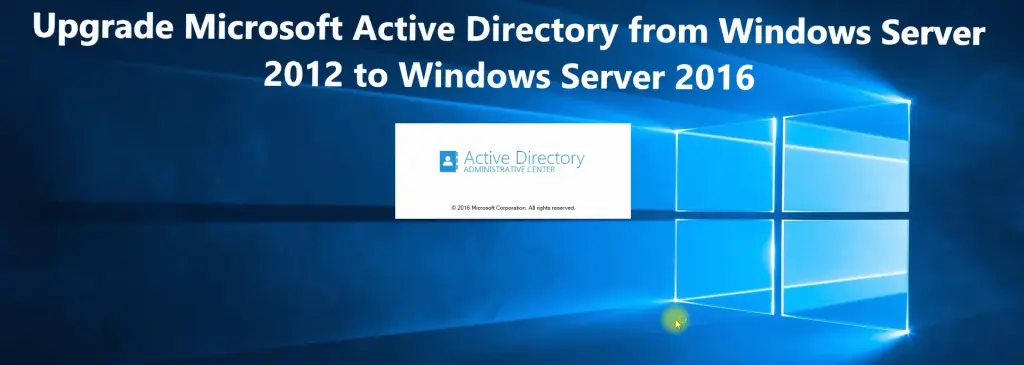As a systems administrator with over 15 years of experience managing enterprise Active Directory environments, I’ve extensively tested numerous free tools that can significantly enhance your AD management capabilities. In this comprehensive guide, I’ll share my hands-on experience with the most effective free Active Directory tools that have proven invaluable in real-world scenarios.
Free Active Directory tools
1. Active Directory Users and Computers (ADUC) Alternative: AD Manager Plus Free Edition

Click here for more details on Official Site – You can download and try free version
While the built-in ADUC serves basic needs, AD Manager Plus Free Edition offers enhanced capabilities that streamline common administrative tasks. This tool particularly shines in environments with 100+ users, where bulk operations become necessary.
Key Features:
- Bulk user creation and modification
- Pre-built report templates for user, group, and computer accounts
- Password expiration notifications
- Group membership management
- Terminal session management
Installation tip: When deploying AD Manager Plus, ensure your service account has the necessary delegated permissions in Active Directory. I’ve found that adding it to the “Account Operators” group works well for most scenarios, though you might want to create a custom group with more restricted permissions in sensitive environments.
2. AD Audit and Security: Purple Knight

Security auditing is crucial in today’s threat landscape, and Purple Knight stands out as an exceptional free tool. Developed by Semperis, it performs comprehensive security assessments of your Active Directory environment.
Key Capabilities:
- Identifies security gaps in AD configuration
- Detects indicators of compromise
- Evaluates security against known attack vectors
- Provides detailed remediation guidance
Real-world application: Recently, I used Purple Knight to identify several dormant but enabled admin accounts in a client’s environment that had been overlooked during employee departures. The tool’s detailed reporting helped justify and guide our cleanup efforts.
3. AD Health Monitoring: Microsoft Active Directory Replication Status Tool

Replication issues can silently corrupt your Active Directory environment. Microsoft’s AD Replication Status Tool provides crucial insights into replication health across your domain controllers.
Core Functions:
- Real-time replication status monitoring
- Detailed error reporting
- Replication topology visualization
- Performance metrics tracking
PS: As of June 2nd, 2023, the Active Directory Replication Status Tool is no longer available for download
4. PowerShell: AD Module & Custom Scripts
While not a standalone tool, PowerShell with the Active Directory module is arguably the most powerful free tool in your arsenal. Here’s a practical script I use frequently for quick AD health checks:
# AD Health Check Script
Import-Module ActiveDirectory
$DCs = Get-ADDomainController -Filter *
foreach ($DC in $DCs) {
$DCName = $DC.HostName
Write-Host "`nChecking Domain Controller: $DCName" -ForegroundColor Green
# Check DC Connectivity
if (Test-Connection -ComputerName $DCName -Count 1 -Quiet) {
# Check Services
$ADServices = @("NTDS", "DNS", "Netlogon", "W32Time")
foreach ($Service in $ADServices) {
$Status = Get-Service -ComputerName $DCName -Name $Service -ErrorAction SilentlyContinue
Write-Host "$Service Service Status: $($Status.Status)"
}
# Check Replication Status
$Replication = repadmin /showrepl $DCName | Select-String "Last SUCCESS"
Write-Host "`nReplication Status:"
$Replication
} else {
Write-Host "Unable to connect to $DCName" -ForegroundColor Red
}
}Also check: 20 Essential PowerShell Commands for Active Directory Management
5. AD Reporting: AD Info Free

For organizations needing detailed Active Directory reporting without the budget for commercial solutions, AD Info Free delivers impressive capabilities:
Essential Features:
- Comprehensive AD inventory reports
- Group policy reporting
- User access rights analysis
- Exchange server reporting
- Custom report builder
Best Practice: Schedule weekly exports of critical reports (user accounts, group memberships, and computer accounts) for compliance and audit purposes. Store these reports securely; they’re invaluable during incident response scenarios.
6. AD Backup: Windows Server Backup

Often overlooked, the built-in Windows Server Backup utility provides reliable Active Directory backup capabilities when properly configured:
Configuration Steps:
- Install Windows Server Backup feature via Server Manager
- Configure System State backup (includes AD DS, SYSVOL, Registry)
- Set up scheduled backups to a dedicated volume
- Implement backup rotation strategy
Critical tip: Test your restore process quarterly in a lab environment. I’ve seen too many administrators discover backup issues during actual recovery scenarios.
7. Active Directory Cleanup: AD Tidy Free

Managing Active Directory objects efficiently requires regular cleanup. AD Tidy Free helps identify and manage stale objects:
Key Functions:
- Identifies inactive user and computer accounts
- Locates empty security groups
- Detects expired user accounts
- Finds duplicate objects
Implementation Strategy:
- Run initial scan in report-only mode
- Review findings with stakeholders
- Create cleanup policy document
- Schedule regular cleanup operations
Conclusion and Best Practices
While these free tools offer powerful capabilities, their effective use requires proper planning and documentation. Here are my top recommendations based on years of AD administration:
- Document your tool deployment and configurations
- Maintain an updated disaster recovery guide
- Regularly test backup and recovery procedures
- Keep tools updated to ensure security and compatibility
- Monitor tool logs for potential issues
Remember: Free tools often lack vendor support, so maintain detailed documentation of your configurations and procedures. Additionally, always test new tools in a lab environment before deploying to production.
By leveraging these free tools effectively, you can maintain a healthy, secure, and efficient Active Directory environment without straining your IT budget.
Further Reads:
How to Secure Active Directory: Best Practices and Pro Tips
Which RSAT Contains Active Directory Users and Computers Windows 11?
How to Create Your Own Lab with Active Directory?
- Why should you automate Active Directory cleanup? - 17 June 2025
- Troubleshooting: Unable to Add Instance Failover Group to Azure SQL Managed Instance - 4 March 2025
- 10 Azure Virtual Desktop (AVD) Cost-Optimization Strategies for 2025 💡💰 - 22 February 2025



